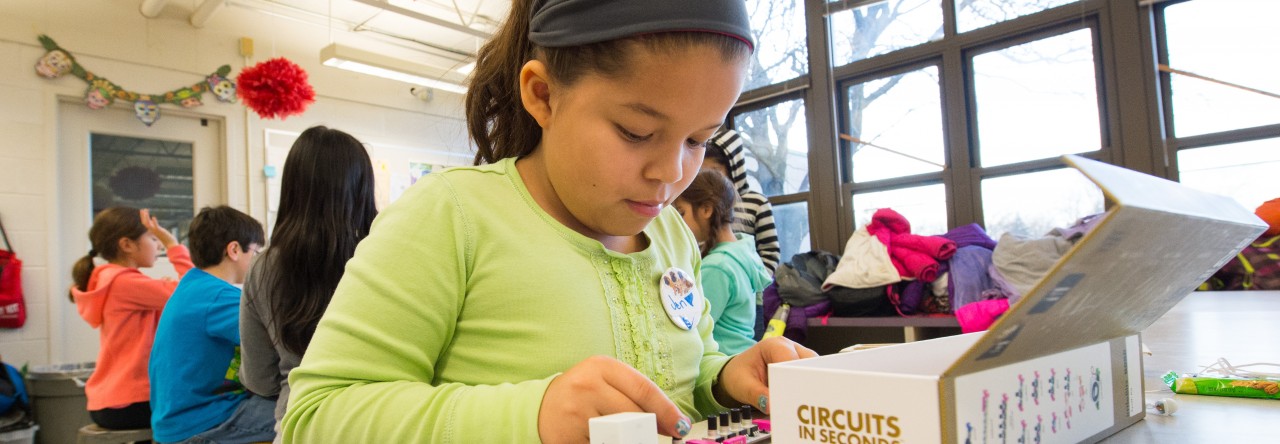Week Two of game design was all about mechanics. The kids broke up into small groups again, either to continue working on the games they’d started creating during the first week, or moving to a new group whose idea they liked better. Greg quickly explained the mechanics of game design: Balance of strategies (too easy to win? too hard?), tension versus payoff (including interaction with other players), making sure that the mechanics go with the theme, and fun checks (to make sure all their hard work was leading to an enjoyable game).
Then it was time to set the kids loose to create their game mechanics and to create prototypes from the various materials we provided them. Some groups divided their labor with a couple kids working on the physical game and the rest working on the rules of the game. Other groups jumped into everything at once, brainstorming ideas and putting together their prototypes as they went along. The materials we provided were a big hit, especially the trinkets and little pieces that Greg brought. Some of the kids got too busy playing to think about how they were playing, which was fun to watch, and a good learning opportunity. “If this plastic spinning top is this much fun to play with, how can you change your game mechanics to fit it into your game?”
At the end of the session, each group gave a pitch describing their game, potential audience, and any challenges they would face making their game a reality. Even the groups who wanted to make video games were able to use physical prototypes successfully, walking their fingers around the prototype to show how the actual player would move through and see the virtual world.
What the kids learned:
“It’s hard!”
With more people in a group, you get more ideas, but the more ideas you have, the harder it is to sift through them and find the really good ones.
Mechanics are difficult.
More difficult to work in groups– something you have to learn about yourself and how to work well in groups.
-Jessica S.


Comments are closed.